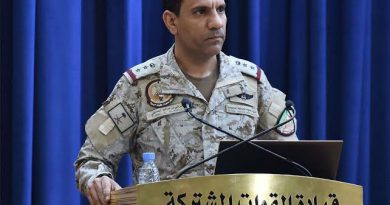Saudi Reforms and Rate Cuts Drive GCC Equities to Two-Year High
Riyadh – Gulf equities experienced a remarkable surge in September 2025, reaching a two-year high as investors responded positively to synchronized central bank rate cuts and signals of deeper market reforms in Saudi Arabia. The rally highlights the region’s growing attractiveness for global investors, with optimism fueled by policy clarity, expanding foreign access, and resilient economic fundamentals.
According to Kamco Invest’s monthly report, the MSCI GCC index climbed 4.9 percent in September, marking the biggest monthly gain in 21 months and closing near a three-year high. Saudi Arabia led the region with a 7.5 percent rise in the Tadawul All Share Index (TASI), reflecting investor enthusiasm following reforms aimed at enhancing market accessibility and promoting foreign investment.
Kuwait, Oman, and Bahrain also posted solid gains, while Dubai, Qatar, and Abu Dhabi experienced modest adjustments, reflecting ongoing market consolidation.
Saudi Arabia Leads the Rally with Broad Gains
Saudi equities staged a decisive turnaround after two consecutive months of declines. The TASI surged 5.1 percent on September 24 alone, its largest single-day gain since 2020, supported by multiple positive drivers.
The Capital Market Authority’s announcement to remove the 49 percent cap on foreign ownership of listed companies spurred significant foreign participation, particularly in the banking sector. At the same time, a 25-basis-point rate cut by the Saudi central bank, in line with the US Federal Reserve’s decision, enhanced liquidity and investor confidence.
Sectoral performance was notably strong. Financial services advanced 12.3 percent, while banks and insurance gained 10.7 percent and 10.2 percent, respectively. Major listed banks such as Al Rajhi Bank, Saudi National Bank, and Bank Albilad rose 14 percent, 11.9 percent, and 11.8 percent, reflecting renewed investor interest
Energy and telecom sectors added to the momentum, rising 3.8 percent and 5.8 percent. Companies such as the National Shipping Co. of Saudi Arabia and Ades Holding saw gains of 24.6 percent and 9.9 percent, while media players including MBC Group and Arabian Contracting Services advanced 23.3 percent and 17.7 percent.
Liquidity improved significantly, with total value traded rising 38.9 percent month-on-month to SR125.7 billion, while volumes reached 5.83 billion shares. Al Rajhi Bank, MBC Group, and Aramco led in trading value, reflecting strong market engagement.
Kuwait Maintains Year-to-Date Leadership
Kuwait extended its lead as the GCC’s top performer for 2025, with the All-Share Index rising 3.5 percent in September and 19.5 percent year-to-date. The Main 50 Index surged 6.7 percent, with the Main Market and Premier Market indices also posting strong gains.
Broad-based sectoral strength supported the performance, with healthcare up 18.3 percent, real estate 6.1 percent, and consumer discretionary 5.4 percent. Banks recorded a 3.1 percent increase, with seven of nine lenders advancing. Trading activity remained robust, with volumes rising 13.3 percent to 10.7 billion shares and value traded increasing 15.3 percent to KD 2.3 billion ($7.52 billion).
UAE Markets Show Selective Strength
Abu Dhabi’s FTSE ADX Index edged down slightly by 0.8 percent to 10,014.6 but maintained gains above the 10,000 mark for the third consecutive month. Sectoral performance was mixed, with strong contributions from utilities, telecommunications, and energy offsetting declines in consumer staples, industrials, and real estate.
Notable movers included GFH, up 22.9 percent, Union Insurance 15 percent, and ADNOC Gas 6.3 percent, following a 10-year LNG supply agreement with Hindustan Petroleum.
Dubai’s DFM General Index fell 3.7 percent in September, trimming its year-to-date return to 13.2 percent. While financials and real estate experienced some pressure, Dubai’s property market remained active, with real estate sales values rising 33.7 percent year-on-year, supported by both off-plan and secondary market transactions.
Positive Regional Outlook and Valuations
The GCC continues to display strong investor fundamentals, supported by policy clarity and sustained non-oil momentum. Valuation metrics show wide opportunities across the region: Dubai trading at 10.7 times trailing earnings with a 4.8 percent dividend yield, Abu Dhabi at 20.7 times with 2.3 percent yield, Saudi Arabia at 19.8 times with 3.5 percent yield, and Kuwait’s premier market at 17.2 times with 2.3 percent yield.
Aggregate GCC market capitalization reached approximately $4.04 trillion, with monthly traded value rebounding to $54.9 billion from $43.6 billion in August.
Smaller markets also contributed positively to the regional narrative. Oman’s MSX 30 rose 3 percent, touching an eight-year intraday high, while Bahrain’s All Share gained 1 percent, supported by strong financials and materials sectors. Qatar’s QE20 posted modest adjustments but maintained resilience, underscoring the GCC’s overall strength.
Investor Confidence Strengthened by Policy Reforms
The September rally reflects growing international confidence in GCC markets, driven by structural reforms in Saudi Arabia, accommodative monetary policies, and strong liquidity.
With Saudi Arabia’s market reforms, robust banking sector performance, and expanding foreign access, the region is increasingly seen as an attractive destination for long-term investment, offering both growth potential and stability.
As GCC markets continue to consolidate their gains, the combination of policy-driven growth, strategic reforms, and resilient economic fundamentals positions the region as a global investment hub, capable of attracting both institutional and retail investors seeking exposure to dynamic emerging markets.



